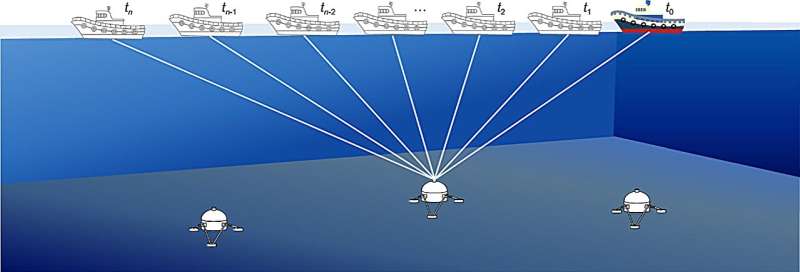Unlocking the ocean's secrets: Next-gen tech for precision seafloor mapping

The exploration of oceanic resources through seismic methods necessitates precise seafloor geophone positioning. Traditional techniques, however, grapple with issues such as the influence of outliers, suboptimal use of precise observations, and the inefficiency of real-time data processing. These challenges undermine the accuracy and effectiveness of seismic exploration, hindering the ability to precisely locate underwater petroleum and natural gas reserves.
A recently published study in the journal Satellite Navigation introduces a real-time acoustic positioning technique, significantly enhancing the precision of mapping the ocean floor for seismic studies. This cutting-edge strategy surmounts previous barriers in accurately positioning seafloor geophones.
The research introduces a real-time acoustic positioning system that fundamentally transforms the accuracy of seismic exploration on the ocean floor. By integrating advanced techniques such as sequential adjustment and Baarda's outlier detection, the method refines the process of analyzing acoustic observations. It groups these observations to construct precise intra-group positioning models, subsequently synthesizing these models to enhance overall positioning accuracy.
This approach has been shown to dramatically improve the precision of seafloor geophone positioning, transitioning from meter-level errors to decimeter-level, and in some cases, achieving centimeter-level accuracy.
The validation of this method involved comprehensive simulations along with practical field experiments conducted in the Bohai Sea, which confirmed its effectiveness in eliminating outliers and maximizing the utility of high-quality observations. This enhancement in positioning accuracy directly translates to improved reliability and efficiency in mapping the ocean floor for the exploration of underwater petroleum and natural gas resources.

Jinye Ma, alongside Shouchuan Fang and Jianhu Zhao, said, "Our method significantly improves positioning accuracy, reducing errors from meters to decimeters, and if the sound velocity profile exists, it can achieve centimeter-level positioning precision."
This method further improves the positioning accuracy of seafloor geophone on the basis of previous studies, provides a new idea for the development of marine navigation and positioning software in China, and is expected to improve the efficiency and accuracy of ocean bottom seismic exploration.
More information: Jinye Ma et al, A rigorous real-time acoustic positioning method for ocean bottom seismic exploration, Satellite Navigation (2024). DOI: 10.1186/s43020-023-00124-3
Provided by TranSpreadSeafloor geodetic positioning model achieves centimeter-level precision
No comments:
Post a Comment